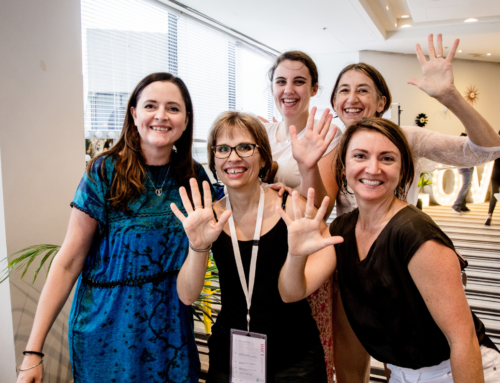The Effects Of A Global Pandemic On Natupreneur Business
Part One in the “How To Pivot” series: Event Changes
The Coronavirus outbreak that is occurring around the world right now, and the resulting call for social distancing, is causing unfortunate consequences for any in-person business, including our own Natupreneur community. And if you had any kind of in-person event planned, most likely it will need to be cancelled or postponed. So I want to share some ideas with you about how to handle those event changes plus another option you might not have considered – converting your in-person health event to online event.
All this week, I’ve been on the phone with organisations about events that have either had to be postponed, cancelled or be transformed and put online because of the social distancing requirements currently being put in place around the world.
This includes all different types of events:
- large events for 600+ people
- workshops
- open house days with up to 100 people
- small events with just a few people
The reason I’m getting into this today is that we all want to be proactive, rather than reactive.
My History Working Online
My very first tele-summit was created back in 2014. In it, I interviewed 10 Natupreneur practitioners and put it online as an online conference. Around the same time, I began doing online consultations in my business. I started with follow-up consultations and later began doing my initial consultations online, as well. My clients came from far and wide, and would also travel overseas, so it worked out well for everyone.
Many of the current practices, policies, and documents provided by our associations were actually developed post that date, around 2015 and 2016. There aren’t a lot of up to date policies around how to do a Natupreneur business online. But the online world has changed incredibly since I started back then.
Today, I’m going to share everything I have for you around the best practices for pivoting your events and everything I’ve learnt in the process of helping other organisations with their big conferences and events. My goal is to help you keep out of a financial hole when it comes to having to reorganise your:
- retreats
- conferences
- workshops
- or any other in-person event
Best Practices For Event Changes
Communicate, Communicate, Communicate
Now, I’ve had to personally go through this the past week and pivot on my own retreat. My retreat was originally scheduled for six weeks from now and was going to be overseas. I’ve pivoted and made it into a domestic one.
We are also communicating with attendees to make sure the latest updates are available to everyone coming on the retreat and how we’re meeting the most recent requirements.
When it comes to communicating event changes, the best methods for updating attendees include:
- social media networks
- push notifications.
For smaller events, email and social updates are probably sufficient. But in the case of a much bigger event, such as if my NatEx event had to change, push notifications via a conference app is a great way to go (yes, we have a conference app planned for next year!).
A conference app is one of the easiest ways to help with your sponsors and exhibitors because they have advertising built into them. It’s also great for speakers because all of their presentations, contacts, and other things are available just through the app. So it makes these interactions really cool. Conference apps can be as cheap as about $400 or as expensive as over $10,000, depending on which one you get.
So there is an opportunity to have an interaction and move a conference online if you need to.
Hewlett Packard just did this because they had a conference in Houston about a week ago. It was going to be a two-day conference for 750 people. What they did was convert it into a big tele- summit. The difference with tele-summits is that you have to be able to provide the speakers with enough time and space. So HP did their tele-summit over a two week period rather than the original two days (because that’s a jam-packed action process).
Making sure that you are conveying your message in accordance with the latest updates from health officials and the government is paramount.
For my retreat, that means I’ve been on zoom calls with my attendees and I’ve made sure every single person is notified. We’re continuing to put this out on social media and stay in contact via email. This is particularly true as significant events start to unroll. Things like the fact that it got classified as a pandemic and the limitations on the number of people we can have together. At each of those points in time, those updates should trigger some type of new communication about how you’re meeting the new criteria.
So, your best practice is to make sure you communicate the latest updates to your attendees and all relevant parties.
Align With Your Mission
The second part of best practice when it comes to events is making sure that people are aware of your mission. Our mission as practitioners is to keep the health of ourselves, our staff, our clients, and the community at large and the planet as safe as possible. Whatever your mission statement is for your practice, you want to reiterate how you are fulfilling that by either cancelling, postponing, or putting your event online.
You also want to make sure that you’ve got updates from the official health and government websites so that everyone is aware. Even this week, some of my best business colleagues were asking, “What’s going on? Somebody just told me I should change my conference that’s at the airport, what should I do?”
Many people aren’t actually watching the news or being updated on this information. Make sure that they have other places to go and find the information and the facts – not a “story” – that go with them is really, really important.
Share Your Preparedness Plan
Reiterating how you are prepared and what that preparedness plan looks like. A preparedness plan is sort of a way to under your terms and conditions when it comes to an event or a change in your event like this.
We can learn from many larger organisations that have a page on their website specifically around their plan and how they will meet current criteria. They share what’s going to happen moving forwards. They will share what’s currently happening and what will happen at the next stage. It’s just a one-pager on your website.
Large music festivals are doing this at the moment. One of the events I was going to in a fortnight’s time with Simon Sinek had a preparedness plan. They pivoted on it and let us know and it’s been a fantastic example of clear communication being kindness.
Redirect Your Audience To Get Information From Official Sites
Lastly, you want to direct redirect your audience to make sure that they are getting the information that they need from official sites.
Recap: Best Practices For Event Changes
1. Communicate your latest updates, whatever they happen to be at that time
2. Emphasise your mission and your vision
3. Share updates from officials and how you are meeting their criteria
4. Reiterate your preparedness plan and point them to where it is available for them to review (website, etc.)
5. Direct your audience to official sites
Handling Internal Changes
Now, that’s how you’re outwardly doing things. What about what’s happening inside your business when you’re pivoting on a retreat or an event?
Negotiating Deposits / Agreements With Venues
Here’s the thing: Given the current events and how they are unfolding, you need to make sure that you give enough time for the event space to understand:
- what they are then going to have to do in two months time after this big wave has passed so that you can push your dates out
- and they have an opportunity to give you a chance to still hold on to the event being held there
- so they have an opportunity to see which parts of the terms and conditions they can – as a business, without folding – look after you. Or not be able to look after you.
When it comes to making sure you aren’t losing deposits on your retreats, you have to get into communication with them. Ideally through a phone call because everything can be lost in email.
Terms and conditions are legally binding and even in these situations, they can be really difficult to navigate when it comes to refunds, cancellations, pushing out dates, or postponing. You have to really focus on talking to your event space to be able to come to a mutual agreement.
If you can’t come to a mutual agreement there are other ways to try, such as the Ombudsman or the Australia Competition and Consumer Commission (ACCC). But if the terms and conditions are there, then you have to have a negotiation through conversation to get the best outcome for everybody.
Be Proactive
If you are going into those conversations, and you’re somebody who is affected by current events, then you want to go into the conversation using similar best practices as described above. Explain to them all of the relevant information, including:
- the latest status
- changing of your events
- your mission and your vision
- the relationship you have with them as the event space and why you chose them
- updates from the officials
- your original preparedness plan and how it hasn’t been met or you haven’t been able to fulfil it
- can we come to a new agreement?
Those are some ways to have that conversation. Then you want to have the same communication following on with your potential attendees and clients.
Some sites will only refund if there is an official ban on travel to that location. That’s one of the reasons why the government is very specific in the way they describe their recommendations. They don’t want to cause economic fallout when they are just “recommending” something.
So this is where it’s important to be proactive rather than reactive and have an early conversation with your event venue. You want to talk about the evolving situation, how official statements are being worded, and what you think could happen in the future. Build on that relationship and what can be beneficial for them, or not so beneficial for them in the future.
Best Practices To Go Ahead With In-Person Events
For smaller events if you choose to go ahead, here are my best suggestions.
If you are part of or will run an event with a smaller number of people, you need to use best practices for creating and a sanitary environment.
Make very sure that:
- there are signs and that they are very specific. If you can even get a pull-up banner made, that would be even better.
- you have distance between your attendees
- there are hand sanitising or hand-washing stations as people come in the door
- coats and other soft materials like kids toys, things that collect snot and things like that, are left at the door
- you provide masks for people who are actively in the middle of cold-like symptoms – and make sure that they USE the mask. Put the policy on a sign that’s clear for everyone to see that in the case of active cold symptoms, wearing a mask or leaving is the best policy.
- there are designated sanitation stations to minimise any kind of transmission
- pre-prepare clients and attendees through emails, socials, and notifications as well as remind them at the event verbally and with signs that these are the policies and what’s going to occur
You can do this on a smaller scale in your clinic as well. Ensure that the information is out there and that you have a procedure in place based on the current advice. Again, we go back to the practice of making sure you have the most recent updates, that your clients understand how it’s aligned with your mission, and how you are meeting your preparedness plan in your clinic.
So those are my best tips and suggestions for:
- managing event changes
- communicating your event or clinic policies and how they the criteria of what’s happening
- and if you are going ahead with in-person events, best practices to create a safe and sanitary event
Taking Your Event Online
This is where I love getting creative, I actually really love this!
Firstly, going online means having the conversation and being able to convey to your speakers, your audience, and whoever might be sponsoring or exhibiting, that you have a new platform.
Choose An Online Platform
Zoom
One of my favourite platforms is Zoom. Zoom is excellent. You can use it for free up to 40 minutes and about $15 a month for basic unlimited time. And then you can have add ons for things like webinars, tele-summits, all of these things. The cool thing about that is you can pay for the first month and then switch to the free account the next month if you need to. So yes, it might be a small outlay to begin with but you can pull that back.
I honestly think every practitioner should have a Zoom account. Here’s why:
- It meets the privacy criteria for Australia and the security criteria for shared health advice and sensitive information, which is needed for people to share their health information with you. So it’s got that level of security which is a great option to have as a backup at any point in time.
- Zoom offers a great connection usually, especially if you’ve got a good WiFi connection. You can see and hear in a really good way.
- It’s great for online consultations, meetings, or webinars.
- There are “gateways” to allow different people to access the webinar. For instance, people who have paid. It also allows you to get in communication and contact with those people (some other methods that you might want to try don’t work as smoothly or as easily)
So if it comes to transferring your event online, Zoom is one of the really cool and easy ways of doing that.
Crowdcast
Then, if you are actually running an in-person event still and some of your attendees can’t come in person, then one of the cool ways to do that is Crowdcast.io.
Crowdcast is a great platform to run a tele-summit online. It also hooks into video. So if you’re in that realm of going pro and you’ve got a videographer, then it hooks into that. And you can automatically record it as well.
So this is the thing about taking your event online. It’s pre-recorded (especially if you’re on Zoom or Crowdcast). Then you can send out the recording as a bonus and you don’t actually have to give back any money that’s already been paid. It’s true that they can’t all join in person, so the networking part essentially doesn’t happen. But you can have breakout sessions in Zoom.
To have it recorded and pass those recordings on means that every one of your attendees gets to continually watch any of the trainings up on stage that they would have only seen once, otherwise.
WebinarJam / WebinarNinja
Another thing you can do instead of actually doing it live is to turn it into a webinar. For webinars, I like WebinarJam or WebinarNinja.
WebinarJam is more expensive. It’s got many ways of doing webinars well. WebinarNinja is super easy to use. By the way, there is a webinar functionality on Zoom, as well.
So when it comes to running your events online, you want to make sure that you’ve got the right platform. These are the platforms that I would consider using.
Make Your Online Event Interactive
You also want to make your event still interactive, even though it’s not in person. This is where those conference apps I mentioned come in.
Conference apps allow people to actually interact with:
- polls
- Q&As
- exhibitors
- sponsors
- ask questions of the speakers
- download files
All while watching the speakers and interacting online at the same time.
Don’t Forget To Communicate
When going virtual, you still need to:
- Demonstrate that you’ve been monitoring what’s been happening
- Reiterate your mission
- Share the reason why you put your event online
- Communicate with your sponsors and exhibitors about pivoting, what that looks like, and what the benefits are
- Check your legals for the spaces. Check your Terms and Conditions for the spaces and see if you are able to push out into the future
Many of the conferences I’ve seen that have hundreds or thousands of people have been pushing and postponing, although a couple of them have canned them completely.
Always Go Pro
Here’s the thing – make sure that you are going pro with it, even when you’re online. How can you keep it from just being somebody sitting in front of a computer sharing their information?
How can you get creative with apps, interactions, and things that might be actually really cool to do, and possibly even better than the conference experience?
Learning From Larger Organisations
Here’s a tip. Watch how large organisations handle these situations and then apply what you learn to your own endeavours. The way large clinics, uni, or other large organisations react can lead the way and show us how we can innovate so that business can continue. The health effects may be the primary result of this Corona Virus but the secondary effect is definitely economic.
Making sure that these changes are in place and communicated the entire way when it comes to your events is just going to be so much more beneficial.
Event Changes Recap:
When cancelling an event:
- review your Terms and Conditions
- make sure you’re communicating with every stakeholder, your attendees, your staff, your speakers, and your sponsors.
If you are considering postponing:
- stage your communications around what’s currently happening and what the newest thing is
- share how your mission and preparedness plans are aligned to meet requirements
- redirect everybody to the right sources
If you decide to put your event online – it’s so exciting! Because:
- there are so many great tools available online
- so many more people can access your event who might not have been able to travel
- you can reach more people with the recordings of your online version
- your attendees can see every piece of your event with the recordings
Get interactive, get creative, and don’t consider this to be all doom and gloom. Because, in actual fact, it’s going to be safer for everybody, it will be easier for many people to access it, and you’ll have more efficiency because you can record it and then possibly sell it or provide it as a bonus to those attendees who were going to be at the event.
Take Action
So if this has been helpful to you and you know somebody that might also benefit from it, just flick it to them or make sure that they have access to it. Then come join us in the Natupreneur Hub and share your takeaways.
Stay safe, people! I encourage you to think about how you can pivot and get diverse in the way you practice and how you show up and share your message. Because now, more than ever, it’s a really important time to continue to share the message of health and wellbeing for the planet and its people.
Click here for more of the How To Pivot series.
Free Resources
Make sure you have all the essentials you need to successfully transition to online consults and a virtual practice covered with my How To Pivot Online Checklist.
Click here to download it now.









Leave A Comment